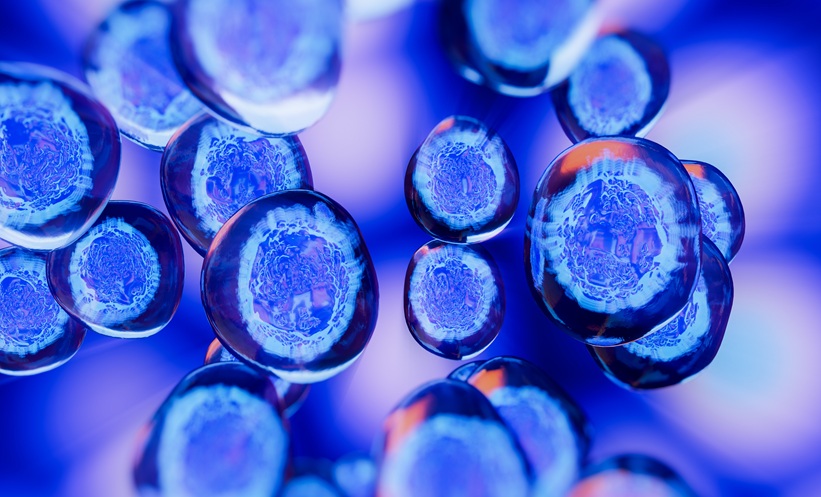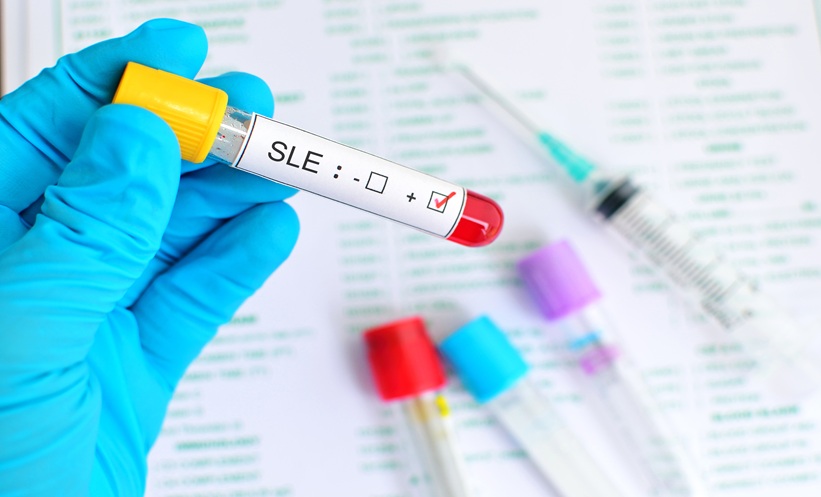Summary
This Janssen-sponsored live symposium entitled “The Launching Pad: Exploring the Potential of the IL-23 Pathway in PsA” took place virtually at the European Alliance of Associations for Rheumatology (EULAR) 2021 virtual congress. The presentations focused specifically on the role of IL-23 in psoriatic arthritis (PsA), including an overview of PsA pathogenesis, updates on the latest treatments, and how insights from recent clinical trials can be applied as individualised treatments in daily clinical practice for patients with PsA.
Siebert discussed how emerging evidence underscores the role of the IL-23 and IL-17 pathways in the development of PsA and showed how data from recent Phase III clinical trials highlight the importance of IL-23 blockade in the achievement of American College of Rheumatology (ACR) scores, as well as dactylitis and enthesitis resolution, in patients with PsA.
Lessons learned from targeting the IL-23 pathway in psoriasis, as presented by Griffiths, demonstrated that recent advances in psoriasis treatment emphasise the importance of IL-23 pathway inhibition as an effective and safe therapy for patients with psoriasis. Recent clinical trials with IL-23 inhibitors have demonstrated the effectiveness of these treatments in the achievement of Psoriasis Area Severity Index (PASI) 75, 90, or 100 responses in patients with psoriasis. The observed efficacy of this relatively new class of biologics also indicates that the achievement of PASI 90 or higher, instead of PASI 75, might represent the new ‘gold standard’ in psoriasis management.
Schett explained the importance of the IL-23 pathway in PsA management. He described how IL-23 is an upstream regulator of pro-inflammatory T-cell activation and is capable of inducing several types of pathogenic immune cells, such as T helper (Th) 17, Tγδ, mucosal-associated invariant T cells (MAIT), and innate lymphoid cell (ILC) 3. He discussed how therapeutic inhibition of IL-12/23 with ustekinumab has been shown to lead to resolution of sub-clinical enthesitis in patients with psoriasis and in improved enthesitis control in patients with established enthesitis. He concluded by illustrating how IL-23 inhibition can also result in the resolution of dactylitis and enthesitis in patients with PsA.
In it for the Long Haul: IL-23 Pathway Inhibition in Psoriatic Arthritis
Stefan Siebert
Siebert began the symposium by illustrating how emerging evidence underscores the role of the IL-23 and IL-17 pathways in the development of PsA, and how activation of IL-23 and IL-17 can stimulate osteoproliferation, inflammation, and bone loss, and ultimately result in ankylosis of the spine in patients with PsA.1 However, recent studies have shown that blockade of the IL-23p19 and p40 subunits can cause a differential reduction in IL-17A and IL-17F effector cytokine levels, and that blockade of the p19 subunit in particular resulted in significant improvements in joint outcomes in patients with PsA during a 52-week treatment period.2,3 Furthermore, treatment with the IL-23 inhibitors guselkumab, risankizumab, and tildrakizumab have resulted in improved ACR20 responses at Week 24 in patients with PsA in Phase II clinical trials.4-6
The DISCOVER-1 and DISCOVER-2 Phase III clinical trials examined the efficacy of guselkumab 100 mg given every 4 weeks (q4w) and 100 mg given every 8 weeks (q8w), compared with placebo.7,8 The DISCOVER-1 trial included 381 patients with PsA, of which 31% were previously exposed to anti-TNF therapy;7 the DISCOVER-2 trial included 739 biologic-naïve patients with PsA.8 The primary end-point of both trials was the achievement of an ACR20 response at Week 24 of treatment.7,8 In both trials, treatment with either guselkumab dose resulted in significant improvements compared to placebo (PBO) at Week 4 (p<0.05), an effect that continued through Week 24 of treatment (p<0.0001 compared to placebo for all guselkumab-treated groups).7,8
In the DISCOVER-1 trial, ACR20 responses were maintained through Week 52 of treatment in 73% and 60% of patients with guselkumab q4w (GUS q4w) and q8w (GUS q8w), respectively; in patients who switched from PBO to guselkumab 100 mg q8w at Week 24 (PBO to GUS), ACR20 response was achieved in 56% of patients at Week 52.7,9 Furthermore, this trial demonstrated that significant proportions of patients achieved PASI 75, 90, and 100 responses at Week 24 and through Week 52 of treatment with either guselkumab dose, as well as in patients who crossed over from placebo to guselkumab.7,9
The results of the DISCOVER-2 trial revealed that 68.3% (PBO to GUS), 73.8% (GUS q8w), and 75.9% (GUS q4w) of patients achieved ACR20 responses at Week 100 of treatment.10 Furthermore, assessments of more stringent ACR criteria showed that 47.6% (PBO to GUS), 54.8% (GUS q4w), and 55.9% (GUS q8w) of patients achieved ACR50 responses, and 29.7% (PBO to GUS), 34.7% (GUS q4w), and 35.5% (GUS q8w) of patients achieved ACR70 responses at Week 100 of treatment.10 Patients receiving either a dose of guselkumab, or those who crossed over from the placebo group to guselkumab, also showed significant improvements in minimal disease activity and skin responses at Weeks 24 (GUS q4w: 19%; GUS q8w: 25%; PBO to GUS: 6%), 52 (GUS q4w: 34%; GUS q8w: 31%; PBO to GUS: 30%), and 100 (GUS q4w: 38%; GUS q8w: 40%; PBO to GUS: 37%) of treatment.10 Promising results indicate that treatment with guselkumab 100 mg q4w or q8w also has a significant impact on dactylitis and enthesitis resolution, as well as improvements in patient quality of life, at Weeks 24, 52, and 100 of treatment (data on file).
Pooled data from both the DISCOVER-1 and DISCOVER-2 trials also indicated that long-term treatment with guselkumab did not result in any new safety signals, further underscoring the long-term efficacy and safety of IL-23p19 inhibition in patients with PsA.10
Lessons Learned from Targeting the IL-23 Pathway in Psoriasis
Christopher Griffiths
Griffiths shared the dermatological perspective on the latest information regarding lessons learned from targeting the IL-23 pathway, noting that approximately 30% of patients with psoriasis will develop PsA and 30% will suffer from concomitant depression or anxiety.11 He also described the importance of IL-17 and IL-23 in the pathogenic inflammatory loop in psoriasis pathogenesis, noting how environmental and genetic triggers can stimulate the production of inflammatory cytokines by keratinocytes, which then produce cytokines that activate dendritic cells to produce IL-23. This drives the production of Th17 cells, which then activates a cascade of cytokines to drive the activation of macrophages, mast cells, neutrophils, and other innate lymphoid cells, ultimately resulting in a pro-inflammatory immune response loop.12
Recent advances in psoriasis treatment have highlighted the importance of IL-23 pathway inhibition, which shows good efficacy and a favourable safety profile for patients with psoriasis. For example, a recent study showed that patients with psoriasis who were treated with the IL-23 inhibitor guselkumab showed greater PASI 90 responses at Week 48 of treatment, compared with patients who received the IL-17A inhibitor secukinumab (84% versus 70%, respectively; p<0.0001).13 Similarly, in a study with the IL-23 inhibitor risankizumab, a higher proportion of patients achieved PASI 90 at Week 52, compared with patients who received secukinumab (87% versus 57%, respectively; p<0.001).14 There are differences, however, even between inhibitors in the IL-17A class, and the IL-17 inhibitor ixekizumab demonstrated similar efficacy for skin clearance at Week 24 of treatment compared with guselkumab in the IXORA-R study (50% versus 52%, respectively).15
The observed high efficacy of current biologic therapies indicates that the achievement of PASI 90 or higher, instead of PASI 75, might represent the new ‘gold standard’ in psoriasis management. For example, evidence from the VOYAGE 1 study indicated that 83.1% (treatment failure rules; TFR) of patients treated with guselkumab achieved PASI 90 responses through Week 252 of continuous treatment. Furthermore, 51% (TFR) of patients receiving guselkumab achieved and maintained PASI 100 at the same time-point.16 The VOYAGE 1 study also showed that patients achieved and maintained Dermatology Life Quality Index (DLQI) scores of 0 or 1 from Week 76 through Week 252 of treatment with guselkumab.17 Further evidence of the sustainable effect of IL-23 inhibition on skin clearance comes from the reSURFACE 1 and 2 studies with tildrakizumab and LIMMitless study with risankizumab, which also demonstrated that patients treated with these IL-23 inhibitors showed sustained PASI responses through Week 244 and Week 196 of treatment, respectively.18,19
Safety analyses of IL-23 inhibitors generally showed no new safety signals: pooled data from the VOYAGE 1 and 2 trials demonstrated that adverse event rates were low and remained stable over time through 5 years of treatment with guselkumab.20 Similarly, the results of the LIMMitless and reSURFACE 1 and 2 trials showed low rates of adverse events in patients treated with risankizumab through Week 224 of treatment and with tildrakizumab through Week 252 of treatment, respectively.18,19
Finally, there is the hope that newer treatments could lead to long-term remission. The underlying mechanism includes T cells infiltrating the epidermis during active disease, becoming tissue-resident memory T cells, and establishing a site-specific disease memory that can potentially result in lesion recurrence.21 Studies have shown that therapeutic blockade of IL-23p19, but not IL-17A, reduced the frequencies of CD8+ tissue-resident memory T cells in resolved plaques, indicating that treatment with IL-23 inhibitors may also offer patients long-term skin clearance benefits, even after cessation of treatment.22
Why IL-23? Psoriatic Arthitis Pathophysiology Through the Domains
Georg Schett
Schett began his presentation by illustrating the domain-specific cytokine responses in the eye, spine, gut, and skin of patients with PsA.23 He discussed the important role that IL-23 plays in these domains, noting that IL-23 inhibition effectively reduces T-cell infiltration in psoriatic plaques.24 IL-23 can also expand pathogenic T cell numbers in patients with Crohn’s disease, as IL-23 derived from macrophages can lead to the expansion of apoptosis-resistant IL-23-positive T cells.25
IL-23 is an upstream regulator of proinflammatory T cell activation, and can induce several types of pathogenic immune cells, such as Th17, Tγδ, MAIT, and ILC3. Th17 cells have been found to circulate in higher numbers in the blood of patients with psoriasis and PsA.26 Tγδ cells are increased in the synovial fluid of patients with PsA, and can also be found in inflamed entheses.27 MAIT cells are derived from the gut and can move to the joints of patients with PsA, further underscoring the communication between the gut and the joints in PsA pathogenesis.28 Finally, ILC3 cells are enhanced in the circulation of patients with active PsA and correlate with joint damage; these cells are also associated with disease activity in patients with PsA.29
IL-23 triggers entheseal inflammation by activating T cells and downstream effector cytokines. Overexpression of IL-23 can lead to psoriasis-like inflammation of the skin, as well as the development of enthesitis, characterised by infiltration of the joint with neutrophils, T cells, and macrophages.30,31 In pre-clinical studies, IL-23 activation also led to the accumulation of Tγδ cells in the entheses, resulting in enthesitis and new bone formation.32 Furthermore, a recent study revealed that the appearance of entheseal lesions is an important predictor of the transition from psoriatic skin disease to joint disease.33 Therapeutic inhibition of IL-12/23 with ustekinumab, however, has been shown to lead to resolution of sub-clinical enthesitis in patients with psoriasis,34 and to improved enthesitis control compared to anti-TNF therapy in patients with established enthesitis.35 IL-23 inhibition also resulted in the resolution of dactylitis and enthesitis after 24 weeks of treatment in patients with PsA.36,37
Panel Discussion
The faculty responded to a variety of questions during the panel discussion moderated by Siebert. The first question focused on why many patients with psoriasis who achieve clearance (PASI 100) of their skin symptoms do not necessarily also achieve DLQI 0/1. Griffiths replied that patients who achieved PASI 100 are often anxious about how durable the effect might be, based on previous experience with only short-lived clearance. Additionally, even with clearance of skin symptoms, patients may still suffer from PsA.
The next question was whether a very good response in the skin might also be predictive of a good response in the joints. Griffiths and his colleagues agreed that the earlier a patient receives treatment, the more likely clearance of skin symptoms and one of the underlying mechanisms may be that early treatment could prevent a tissue-resident memory from being established. However, Schett pointed out that, for the most part, patients with PsA are treated late, several years into the course of their disease. This may also explain why only a minority of patients with PsA see a substantial improvement beyond ACR20. Furthermore, as psoriasis usually precedes the onset of PsA symptoms, it may be possible that by treating skin symptoms early and with highly efficacious medications, the later occurrence of PsA could be prevented. It will be interesting to identify biomarkers that could predict which patients will later develop PsA. This would be a big step towards next-generation healthcare.
The viewers were also interested in understanding whether drug withdrawal could be considered for patients with PsA. Siebert cautioned that drug withdrawal may be difficult in patients with an established disease, while Schett argued that genetic factors are very important in psoriatic disease. Additionally, mechanical stimuli and metabolic factors also need to be taken into consideration as underlying triggers of the disease. Obesity in particular is a driver of PsA and by controlling and reducing weight, PsA symptoms can be improved.
In conclusion, the speakers summarised that in order to achieve long-term control of both PsA and psoriasis, it is important to address factors relating to the patient’s lifestyle (namely establishing a regular exercise regimen, achieving weight loss, and stopping smoking); treat patients with the right drug, preferably with highly efficacious medications such as IL-23 inhibitors; and to do so at an early stage of the disease.

![EMJ Rheumatology 8 [Supplement 2] 2021 feature image](https://www.emjreviews.com/wp-content/uploads/2021/09/EMJ-Rheumatology-8-Supplement-2-2021-feature-image-940x563.jpg)






